31 Years Ago Today: The Exxon Valdez Oil Spill
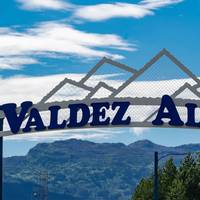
On March 24. 1989, the single-hull tanker Exxon Valdez was departing the Port of Valdez, Alaska with a full load of North Slope crude oil (approximately 1.26 million barrels) destined for Long Beach when it grounded on Bligh Reef in Prince William Sound. The resulting oil spill (approximately 258,000 barrels), while not the largest in US history, was clearly the most important. It engendered much litigation. Public concern over the spill led directly to enactment of the Oil Pollution Act of 1990 (OPA 90)…
Today in Maritime History: Grounding of the Supertanker Torrey Canyon
On the world stage, the grounding of the supertanker TORREY CANYON on Pollard’s Rock in the Seven Stones reef between Cornwall and the Scilly Isles is more significant than the 1989 EXXON VALDEZ oil spill. The TORREY CANYON was one of the first tankers large enough (120,000 tons capacity) to be designated a supertanker. It was also the first loaded supertanker to spill its entire cargo. After salvage efforts failed and the oil flow increased, the British Government decided to bomb the ship in an attempt to burn the oil. This was a radical decision because the wreck was outside the three-mile territorial sea limit prevalent at that time. The Royal Air Force had difficulty hitting the ship, so the Royal Navy sent its planes in.
USCG & Liquefied Gas Cargoes as Marine Fuel
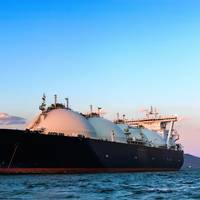
The establishment of air emissions regulations in the form of Emission Control Areas (ECA) and the approaching IMO 2020 sulfur cap have driven the search for economically, commercially, and environmentally acceptable marine fuels. With advancements in technologies and the significant growth of U.S. liquefied gas export markets, Coast Guard examiners are seeing a new trend on vessels carrying liquefied petroleum gas (LPG) and ethane; these vessels are using their cargoes as fuel…
This Day in History: Texas City Disaster
On 16 April 1947, in the port of Texas City, Texas, the freighter GRANDCAMP, with a cargo of ammonium nitrate, small arms ammunition, machinery, and sisal twine, caught fire. The fire quickly spread to the nearby freighter HIGH FLYER, loaded with ammonium nitrate and sulfur. When the two ships exploded, it largely flattened the harbor area. It is estimated that over 600 people died in the explosion and fires (exact numbers were unattainable due to the extent of damage). The US Coast Guard investigation of the casualty determined that the fire was initiated by unauthorized smoking in the cargo hold of the GRANDCAMP. It recommended, among other things, that regulations for carriage of dangerous goods be revised.(Source: Bryant's Maritime Newsletter)
Master imprisoned for Bribery
The Hong Kong Marine Department issued a Marine Notice stating that a master was prosecuted and sentenced to four months imprisonment for bribing a Marine Department surveyor during a port state control inspection. (Source: Bryant's Maritime Blog)
Supreme Court Rules on Asbestos Liability
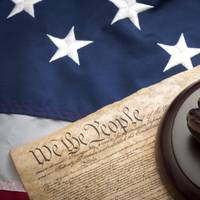
The United States Supreme Court held that, in the maritime tort context, a product manufacturer has a duty to warn when its product requires incorporation of a part that the manufacturer knows or has reason to know that the integrated product is likely to be dangerous for its intended uses and the manufacturer has no reason to believe that the product’s users will realize that danger. In the instant case, the manufacturers produced equipment for three Navy ships. The equipment required asbestos insulation or asbestos parts to function as intended…
On this Date 1757: ADM John Byng Executed
On 14 March 1757, Admiral John Byng, Royal Navy, was executed by firing squad while he was kneeling on the forecastle of HMS Monarch in the Solent. Admiral Byng had been court-martialed for personal cowardice, disaffection, and for not having done his utmost to prevent Minorca from falling to the French following the Battle of Minorca on 20 May 1756. He was convicted only of “failing to do his utmost”. The British and French fleets were numerically equal (ten ships each), but the British had scrapped their group together hastily and its ships were in disrepair. The British fleet suffered significant, but not fatal, battle damage. When the French fleet departed at the end of the engagement, Admiral Byng did not order his fleet to follow.
USCG – BWMS compliance date extensions
The US Coast Guard issued a bulletin stating that it has reconsidered its previous interpretation of ‘next scheduled drydocking’ with respect to ballast water management system (BWMS) compliance dates. Due to drydock slippage, the Coast Guard has determined that existing extensions with a compliance date stipulated as the ‘first scheduled drydock after (date)’ will not be affected by circumstances such as drydocking for emergency purposes or to install an exhaust gas cleaning system (scrubber) that did not involve a statutory out-of-the-water survey. (3/11/19) [http://mariners.coastguard.dodlive.mil/2019/03/11/3-11-2019-ballast-water-compliance-date-extensions-next-scheduled-drydock/].(Source: Bryant's Maritime News)
Senator Debuts Bill to Repeal Jones Act
Sen. Mike Lee (R-UT) introduced the Open America’s Water Act of 2019 last week, according to a press release from the senator, a bill which would repeal the Jones Act and allow all qualified vessels to engage in domestic trade between U.S. ports.“Restricting trade between U.S. ports is a huge loss for American consumers and producers," said the Senator in the press release. "It is long past time to repeal the Jones Act entirely so that Alaskans, Hawaiians, and Puerto Ricans aren’t forced to pay higher prices for imported goods—and so they rapidly receive the help they need in the wake of natural disasters.”In 1920, Congress passed the Merchant Marine Act (the Jones Act), which requires all goods transported by water between U.S.
Proposed Deepwater Port in Gulf of Mexico
The Maritime Administration (MARAD) issued a notice stating that a public scoping meeting will be held on 20 March in Lake Jackson, Texas to receive comments on the proposed deepwater port (DWP) in the Gulf of Mexico to be constructed and operated by SPOT Terminal Services LLC. Written comments must be received by 5 April. 84 Fed. Reg. 8401 (3/7/19) https://www.govinfo.gov/content/pkg/FR-2019-03-07/pdf/2019-04101.pdf(Bryant's Maritime Newsletter)
On this Date: Herald of Free Enterprise
On March 6 1987 the Herald of Free Enterprise capsized minutes after leaving the harbor in Zeebrugge, Belgium.Herald of Free Enterprise was a double-ended ro-ro car and passenger ferry operating between Bruges-Zeebrougge, Belgium and Dover, England. On 6 March 1987, it departed Bruges-Zeebrougge with a crew of 80, carrying 459 passengers, 81 cars, 3 buses, and 47 trucks. Due to a series of mistakes, the bow doors were not closed prior to leaving port. Upon leaving the harbor and while the ferry was proceeding at over 18 knots, water entered the vehicle deck in large quantities. The free-surface effect of the water impaired stability and led to the capsizing, which occurred in less than one minute. The sinking resulted in 193 deaths.
Two Injured in Lifeboat Mishap
A Coast Guard aircrew flew two men to the hospital after they were injured falling overboard with a lifeboat from a tanker 70 miles east of Chincoteague, Wednesday.The two engineers were reportedly working on an enclosed lifeboat when it released and they both went over with it. The crew of the tanker, Chemtrans Nova, contacted Coast Guard Sector Hampton Roads watch standers to request assistance.The Coast Guard Cutter Reliance, a 210-foot ship, was on patrol about 20 miles away and diverted to help. Their small boat crew arrived and recovered one person off the lifeboat and the other in the water. Their injuries included a stomach laceration and broken leg.A U.S.
Envirocleanse Recieves BWMS USCG Approval
The Marine Safety Center issued the 16th U.S. Coast Guard Ballast Water Management System Type Approval Certificate to Envirocleanse, LLC, after a detailed review of the manufacturer’s type approval application determined the system met the requirements of 46 CFR 162.060.The treatment principle of the inTank BWTS consists of in-tank electrolysis and/or in-tank chemical injection, with in-tank neutralization prior to discharge. This approval covers models with maximum treatment volumes up to 200,000 m3.(Source: Bryant's Maritime Blog)
Today in Maritime History: Sinking of MV Wilhelm Gustloff
MV Wilhelm Gustloff was launched in 1937 as a German passenger vessel. Initially used for cruises in the Baltic, it was briefly converted to a hospital ship at the start of World War II and then used as a barracks ship in German-occupied Gdynia. With the Russian assault in early 1945, the ship was designated to evacuate troops, auxiliaries, and civilians back to Germany. It departed Gdynia early on the morning of 30 January 1945 with an estimated 10,000 persons onboard, including 5,000 children. Fearing a collision with a supposed Germany naval convoy that night, the master activated the ship’s navigation lights. The lights were observed by a Russian submarine, which fired three torpedoes. All hit their mark and the ship sank quickly, with only a few hundred survivors.
Stink Bugs Drive Car Carrier from Port

Biosecurity New Zealand has directed a vehicle carrier to leave New Zealand waters following the discovery of stink bugs and other regulated pests.Biosecurity officers intercepted 3 live and 39 dead brown marmorated stink bugs and 69 other dead regulated stink bugs after the Carmen arrived in Auckland from Europe on Wednesday morning.The vessel was carrying a range of vehicles from Europe and the United States."The interceptions indicated the cargo was likely to be infested with stink bugs.
The EPA's Clean Water Act and Understanding VGP
The Vessel General Permit (VGP) falls under the National Pollutant Discharge Elimination System (NPDES) of the Federal Water Pollution Control Act (FWPCA), better known as the Clean Water Act. It is administered by the US Environmental Protection Agency (EPA), an agency not well known or understood by the maritime industry.For years, the EPA had adopted a policy of broadly exempting discharges into the water that were incidental to normal operation of vessels. That changed after environmental advocacy groups prevailed in a judicial challenge. The first iteration of the VGP entered into effect in 2008 and remained in effect until replaced by the current iteration in 2013.
Serious Questions Surround BWMS Testing
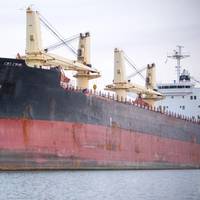
Serious questions have been raised regarding the testing of ballast water management systems (BWMSs). In order for a BWMS manufacturer to sell its equipment for use on commercial vessels operating in U.S. waters, the equipment must be tested in accordance with U.S. Coast Guard and Environmental Protection Agency (EPA) requirements and the equipment must then obtain a type approval certificate from the Coast Guard. To date, type approval certificates have been issued to six manufacturers and others are in the pipeline.
El Faro and Perceived Deficiencies in the ACP
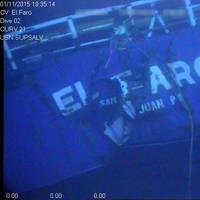
The October 1, 2015 loss of the U.S. cargo vessel El Faro along with its 33 member crew led to the convening of a Coast Guard Marine Board of Investigation charged with determining as closely as possible the cause(s) of the casualty; whether there is evidence that any failure of material was involved; whether there is evidence of misconduct, inattention to duty, negligence, or willful violation of law; and whether there is evidence that government personnel contributed to the casualty. The Marine Board released its report on October 1, 2017, the second anniversary of the casualty.
US Navy: Back to Basics
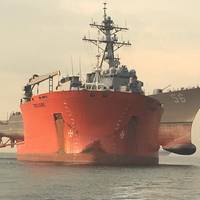
The U.S. Navy has a well-deserved reputation for seamanship in trying conditions. Recently though, the Navy has suffered a series of marine casualties, including the fatal collisions involving two destroyers of the Pacific Fleet. On June 17, USS Fitzgerald (DDG-62), an Arleigh Burke-class destroyer, was involved in a collision with the container ship ACX Crystal off Japan, resulting in the deaths of seven Navy crewmembers. The destroyer was severely damaged and is being returned to the United States via heavy-lift vessel for extensive repairs. On August 21, USS John S.
Salvage and Marine Firefighting
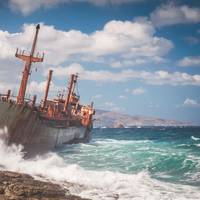
Salvage and marine firefighting are complex response efforts often undertaken in adverse weather and sea conditions. While no two oil spill responses are the same, the diversity of variation between any two oil spill responses is not near as great as the diversity of any two salvage and marine firefighting responses. As a result, salvage and marine firefighting response providers must plan for and anticipate a wide range of variation in what will be required to address their portion of a marine casualty. The U.S.
Melting Sea Ice: A Canary in the Coal Mine
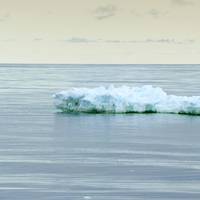
The rapid loss of Arctic sea ice is a sentinel. Most of us will never venture into the Arctic, but it can and does provide us with a forewarning of impacts coming to our parts of the Earth – and some of the most significant impacts will directly affect the maritime industry. In earlier times, coal miners were sometimes overcome by the buildup of odorless carbon monoxide gas. Some died as a consequence. Eventually it was realized that canaries were more susceptible to the gas than were humans.
Biofouling Keep Out!
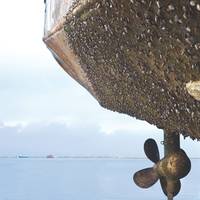
Biofouling was a backburner issue until 5 March 2017. On that day the Government of New Zealand ordered the bulk carrier DL MARIGOLD out of NZ waters after the vessel’s hull was determined to be excessively fouled with potentially invasive organisms including barnacles and tube worms. The bulker was not allowed back until it showed that the underwater surfaces had been thoroughly cleaned. This was the first known instance of a vessel expulsion due to biofouling. It was also significant…
Lines in the Water
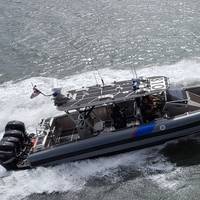
There are a variety of jurisdictional lines in the water. The first line to be considered is the national boundary between two adjacent or nearby countries. Adjacent countries tend to draw agreed boundaries extending their shoreside boundaries, with accommodations for headlands, capes, etc. Most national boundaries have been agreed upon long ago. A few, though, are not officially resolved. Somewhat surprisingly, of the four marine boundaries between Canada and the U.S., three are still in dispute.





